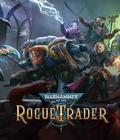Whether you know the series as Hot Shots Golf or Everybody's Golf, the golf franchise has been popular for a long time. Even with a developer change, the simplicity of the game's golf mechanics and arcade-like approach has made it a favorite among PlayStation players since 1997. Throughout that time, the series has seen two different developers. Camelot started the series before going to Nintendo to do the Mario Golf line of games, while Clap Hanz became the series stewards from the second game onward. The series has lain dormant since the release of the PS4 entry, and while the release of Everybody's Golf: Hot Shots has ended that drought, lots of things have changed. Clap Hanz has moved on to become a full-fledged third-party developer, as their last two games have been released on non-Sony platforms. Sony has handed publishing duties to Bandai Namco Games, and HYDE, Inc., has become the new developer with a game that feels like a more back-to-basics approach.
Mechanically, the game retains all of the hallmarks of the long-running golf series. The system is reliant on the traditional three-click mechanic of start shot/set power/set accuracy and while there are a few variations for the meters, the classic stuff remains for those who are averse to any of the changes. The game goes for a hybrid of arcade and simulation, so the approach is easy to understand, but there's enough tweaking that can be done to make the game feel more realistic. The roster of golfers is plentiful, with a good mix of new and returning golfers. There are also a number of caddies to choose from. This time around, the caddies are actually present on the field instead of just being disembodied voices.
Both the caddies and golfers can level up the more you use them, but the leveling system isn't too traditional. Leveling doesn't increase their relative stats, but it does reward you with prizes, such as new shot variations or color schemes or outfits. The more important rewards are food, which can also be purchased in the store with coins that are earned throughout the game. The food is used to increase various stats, but food isn't locked to the golfer who earned it. As a result, you have complete freedom in who you want to level up and when, so you're not forced to use a specific caddy or golfer if you want to boost their stats.
That's about the extent of the gameplay mechanics. You get a basic menu for everything instead of a fully rendered walkable hub like in the PS4 game. You don't get to level up your abilities through regular use. You don't get anything revolutionary that hasn't been in the series before. You also don't get to do any character creation. This is all old and familiar stuff for longtime players, and you get the sense that the team wanted something that was safe rather than something that might be rejected by those looking forward to this title. It's not a bad approach, and it works well for those who want a simpler arcade golf game. Those looking for something fresh from the series will want to temper their expectations.
The base golfing mechanics will be familiar to anyone who has ever played a non-analog stick golfing game, but there is no extra help for those trying to learn the ins and outs of the sport. If you need visible lines to give you an idea of where a ball would go on a putt or a shot, you're out of luck because they're not in this game. That part is almost essential when you putt, since it's difficult to see how the land is sloping. It also doesn't help that your caddy gives you advice in a slow enough manner that you'll get the advice right after you've committed to your shot. These things aren't game-breakers, but they dampen the game's fun a bit.
The number of game modes is plentiful, especially since all of them can either be played solo or with up to three other people either locally or online. Solo Round, Match Play, and Stroke Play are all self-explanatory. Challenge mode is where solo players will spend most of their time, since there are a set number of course configurations. Simply playing them fills up a meter, and wins fill the meter even more. Once the meter is completely filled up, you get a special versus match, and if you win, it unlocks more course configurations to start the cycle anew. These challenges can be played with any golfer, and the cash prizes are a good means of grabbing everything in the store to power up everyone in your roster.
World Tour is the other major single-player mode, and it acts more like an Arcade mode would in a fighting game. You select a golfer and then have to go through seven rounds of golf with them against specified opponents. Bookending each match is a bevy of cut scenes told in a visual novel format that tell your specific golfer's story. The stories range from the mundane to the absurd, but they fit in well with each golfer's ridiculous personalities. For those who don't care much for narrative, the mode has the option to skip those cut scenes and concentrate on the golfing. It's a welcome option, since you'd otherwise spend lots of time button-mashing through scenes.
Wacky Golf is where things get interesting, as it leans heavily into ridiculousness with four different golf types to choose from. Scramble is interesting enough; you play as a team of two golfers, with each one alternating turns with each stroke. Survival is a versus mode where the loser gets a club randomly taken away. The penalty might not initially seem significant for those unfamiliar with golf, but aficionados will lament the removal of even one club, since that determines how far a ball has the potential to go when hit. Colorful is where things get interesting; your ball can land on different-colored squares on the course to activate a random effect. Some could be as simple as stat boosts, while others change the game significantly, such as having tornado holes that immediately suck in balls within range or an animal stampede that knocks the ball into a random place. Finally, Boom Golf places landmines on the field, and touching one sends the ball careening in a random direction. These modes, especially Colorful and Boom Golf, are perfect for those who want to play golf with a little chaos.
One drawback that affects the game has to do with the courses. There are only 10 of them in the game, and while they're fine courses, there's nothing that makes them memorable or significant compared to other golf games. The game has you going through the same courses multiple times, so it won't take long before you're intimately familiar with each hole. The game tries to mix up things by having slightly randomized weather patterns instead of the weather being static. The new nighttime setting makes this game feel unique compared to its contemporaries, since golfing at night isn't something you'd usually see. Still, the weather option only goes so far, and it would be nice to see more courses added to the game over time.
Another part of the game that will elicit different reactions from people has to do with the character unlocks. The roster of characters is huge, and it can take an average of 30 minutes to unlock any character. However, you start the game with only two golfers and one caddy, so you'll be playing the same holes very often to make a small amount of progress toward making everyone available for play. On the one hand, this means that you have a ton of reasons to revisit the game for solo play. On the other hand, it means that it'll take quite some time before you can get a four-player local game going where no combinations of golfer and caddy are alike.
There's also the fact that the game's difficulty is wildly inconsistent. One match against an opponent set to Easy may see you getting wrecked, while another match set against someone at the game's default level will see you winning by several strokes. The game tries to compensate by ensuring that you'll always get rewards and XP. The unpredictable difficulty means that trying to complete your bonus objectives in World Tour mode is dependent on luck more than skill.
Visually, Everybody's Golf: Hot Shots adheres to the throwback approach that the gameplay does, and that's not necessarily a good thing. For the positives, the character models are good and expressive, and the frame rate is solid. Most of the animations are also good, but it seems like there's more attention on animation that end up being distracting, such as exaggerated approaches to the tee rather than details the previous games got right, such as having clothing and hair react to wind direction. The environments look decent enough, but those with HDR displays will notice that the colors remain muted, so there's no expected pop. There's actually less vegetation on the ground compared to previous games, and elements such as random bystanders and animals are both pulled back and tend to disappear too quickly as a ball is coming through. While the Steam store page mentions the game's use of AI for trees, you'll be more disappointed in the fact that detail pop-in for trees is super noticeable. It happens any time the camera starts to zoom in. Some effects also seem misplaced, such as lens flare being present when it's an overcast day.
Sound-wise, the game is rather messy. This is especially true of the voices for every character you encounter. The game tries to lean toward being goofy overall, but a number of the characters are forced to say terrible lines that make players want to stay as far away from them as possible, especially someone like Mizuki, who tries to play the role of a tortured anime hero. Even if you can stomach having some outlandish characters, the game does no one any favors by having everyone speak all at once, stepping over each other to the point where you have to focus squarely on one character and block everyone else to hear them. Then again, you won't have to worry about that for long, since the game has given each character so few voice lines that you'll hear phrases get repeated several times over the course of a six-hole tour. The rest of the sound categories are fine, but the voices stand out in terms of how far things have regressed compared to the previous entries in the series.
Those who plan to play the game on the Steam Deck will find the experience to be more serviceable than ideal. Despite having Easy Anti-Cheat present, the game runs on the device. Those using other Linux devices will need to add steamdeck=0 %command% into the launch parameters for the game to run. The game displays in the Deck's native 1280x800 resolution, but settings carry over from device to device, so you'll want to do some tweaking before playing a round. Even with everything set to their lowest, though, the game's frame rate fluctuates; the average is about 30fps, but things can dip on the initial hole flythrough and mode introduction sequences. If you're already used to the 60fps on a desktop, then you'll need to recalibrate your reaction times to keep getting perfect shots. The game also eats up battery life, so you can get an average of under two hours from a full charge on the LCD version of the Deck.
Everybody's Golf: Hot Shots is fine overall. The core gameplay experience remains unchanged, the performance is solid, and the modes are plentiful enough to keep you occupied for a very long time, even if that means that unlocking the roster can feel like a grind. However, the courses you play are merely fine, some of the mechanics feel dated, and the presentation lacks polish. Longtime fans may pick up this title anyway, considering how long it has been between entries. More casual fans will have a good time, but don't go in expecting the high standards of the previous titles in the franchise.
Score: 7.0/10
More articles about Everybody's Golf Hot Shots











 Grab a club and hit the links to become the ultimate golfer in Everybody's Golf Hot Shots, a brand-new entry in the Everybody's Golf series.
Grab a club and hit the links to become the ultimate golfer in Everybody's Golf Hot Shots, a brand-new entry in the Everybody's Golf series.














